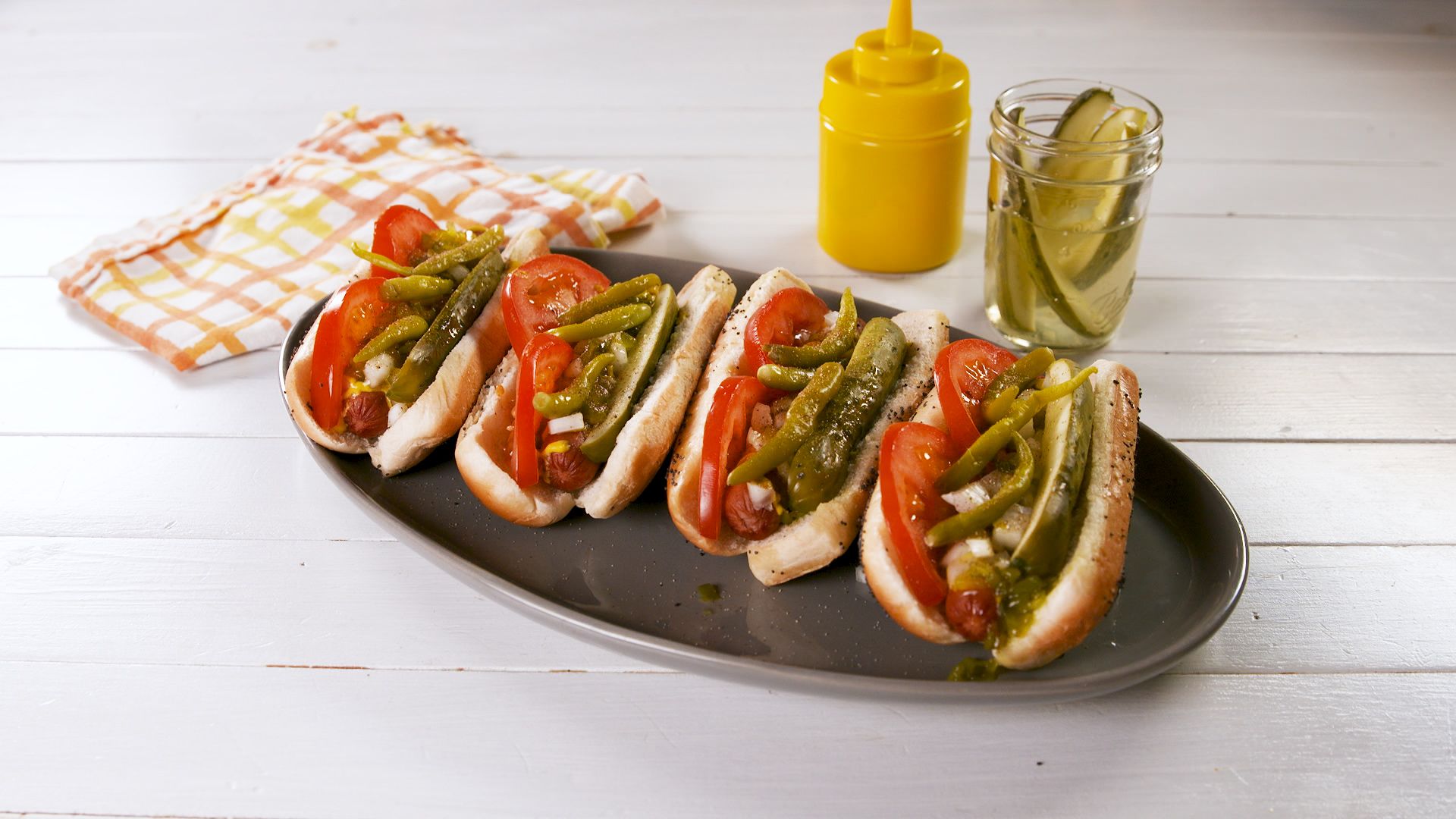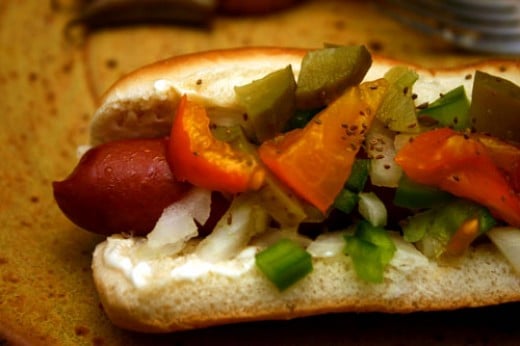


More than a century later, Vienna is still the main game in town, supplying franks to 85 percent of Chicago’s hot-dog stands.

Jack Drexler, grandson of Fluky’s (now called U Lucky Dawg) original owner, Abe Drexler, claims, “If we weren’t the first selling Chicago-style hot dogs, we were pretty close to being first.”īut even earlier, the hot dog-sans seven toppings-made its Chicago debut when it was trotted out at the 1893 World’s Columbian Exposition under the Vienna name by a couple of Austrian immigrants looking to cash in on the Eastern European frankfurter. “The best I got from various interviews from old-timers, many now gone,” Kraig says, “was that the Chicago dog as we know it was invented in the teens, and the toppings came from competition among Greek and Italian vendors, who needed to add value to their product during the Depression.” To echo that point, the earliest offering from the legendary Fluky’s Maxwell Market stand was dubbed “The Depression Sandwich,” selling for a nickel back in 1929. And the guy who’s heard the most of those stories is Bruce Kraig, president of Culinary Historians of Chicago and author of the forthcoming book The Hot Dog (spring 2009, Reaktion Press). How these particulars came to be is part speculation, part marketing and a little bit of the old telephone game (i.e., “this guy my father’s brother knew said…”). If you’re dumbfounded, this breakdown is for you: a boiled or steamed all-beef dog on a poppy-seed bun topped with mustard, relish, chopped onions, tomato wedges, a pickle spear, sport peppers and celery salt. If you rattled them off faster than the Sox can tank a winning season, congrats, you’re officially a Chicago dog aficionado. “I was especially thinking about the spiciness of it,” she says, “and if it came from any particular ethnicity that came to Chicago.Quick: Name the components of a classic Chicago-style hot dog. This got her thinking about why and how all these ingredients made it into the final seven. “It’s too spicy for the kids and my husband thinks it’s kind of like a salad on a hot dog,” she said. She says when her family goes to the local hot dog stand, she’s the only one who gets the traditional toppings. Nina Diehl is an elementary school teacher in Oak Park. And I agree that ketchup does not belong on a hot dog.” “But then I tried one and have been absolutely devoted to Chicago hot dogs ever since. “I wondered how this could taste any good,” she recalls.

Understandably, when she first moved to Chicago she was a skeptical of the all-beef frank buried under a garden of condiments. But she grew up around Indianapolis where, she says “they eat pork hot dogs and, heaven forbid, put ketchup on them.” Jill Westerfelhaus works in the field of mental health and lives in northwest-suburban Park Ridge. There may be no better person to walk us through this story of food and immigration than historian Bruce Kraig, the author of several food histories including Man Bites Dog and Hot Dog: A Global History. This particular combo of ingredients tells the story of early 20th century immigration to Chicago - especially to the Maxwell Street Market area, around Halsted Street and Roosevelt Road. The answers add up to more than just delicious food trivia. They wanted to know who invented it, when it was invented and why it’s so strongly-associated with the city. Several Curious City fans - including Jill Westerfelhaus, Gus Lopez and Nina Diehl - have sent in questions over the years about this taste combination. It all starts with a snappy all-beef wiener, one that gets nestled in a steamed poppy seed bun and topped with yellow mustard, chopped onions, neon-green relish, two slices of tomato, a dill pickle spear, two sport peppers and a final whoosh of celery salt.īut how did this peculiar group of ingredients come to define Chicago-style hot dogs?


 0 kommentar(er)
0 kommentar(er)
